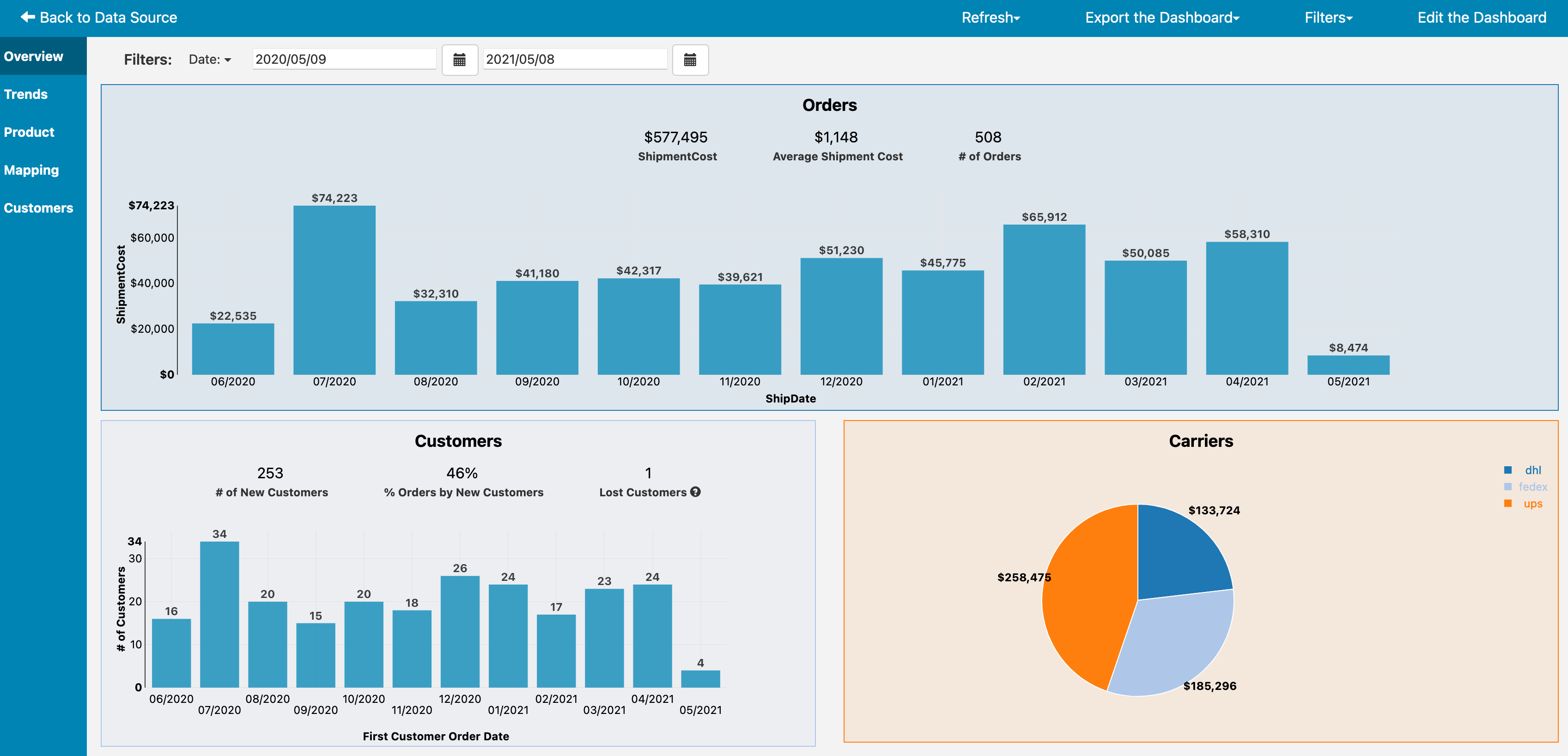
ShipStation: Complete Buyer's Guide
Multi-carrier shipping automation platform
ShipStation positions itself as a multi-carrier shipping automation platform designed to streamline ecommerce fulfillment operations through AI-powered optimization and workflow automation. The platform targets small to medium-sized businesses seeking rapid implementation alternatives to enterprise solutions that typically require 6-18 months for deployment [42][54].
Market Position & Maturity
Market Standing
ShipStation operates within the rapidly growing ecommerce fulfillment market projected to reach $468.44 billion by 2034, positioning itself as a specialized shipping automation platform targeting SMB requirements [59][74].
Company Maturity
The platform's integration with 150+ ecommerce platforms demonstrates established market presence and technical maturity [74].
Industry Recognition
While specific awards and analyst recognition require additional verification, customer evidence provides strong validation of platform effectiveness [69][70].
Longevity Assessment
The platform's specialization in shipping automation within the growing ecommerce market suggests sustainable positioning, though competitive pressure from comprehensive platforms offering both shipping and warehouse capabilities may require continued innovation and feature expansion [26][31][66].
Proof of Capabilities
Customer Evidence
Nakie (Clothing Retailer) achieved 50% shipping cost reduction and eliminated hours of manual label writing through ShipStation's automation features [69]. Sydney Sock Project documented 45 minutes daily savings and 11,000 annual minutes saved through automated carrier comparisons [70].
Quantified Outcomes
Nakie's 50% shipping cost reduction and Sydney Sock Project's 11,000 annual minutes saved demonstrate measurable operational value [69][70].
Case Study Analysis
Customer evidence reveals consistent success factors for ShipStation implementations, particularly for businesses experiencing manual shipping bottlenecks [69].
Market Validation
The platform's integration with 150+ ecommerce platforms provides evidence of broad market acceptance and technical compatibility [74].
AI Technology
ShipStation's technology foundation centers on AI-powered shipping automation with three primary capabilities: automated rate shopping, returns processing, and inventory management optimization [70].
Architecture
ShipStation's AI capabilities focus on shipping workflow optimization rather than comprehensive warehouse management, differentiating from competitors like Logiwa IO [32][60].
Primary Competitors
ShipStation competes directly with ShipBob, ShipHero, and Logiwa IO in the mid-market fulfillment space, while enterprise alternatives include IBM Sterling, Blue Yonder, and Salesforce Commerce Cloud [26][31][32][66].
Competitive Advantages
ShipStation's primary competitive advantage lies in implementation speed and shipping automation depth. The platform's estimated 2-4 week deployment timeline significantly outpaces enterprise solutions requiring 6-18 months [51][42].
Market Positioning
ShipStation specializes in shipping automation, providing distinct value for businesses prioritizing carrier management over comprehensive warehouse automation [32][60].
Win/Loss Scenarios
Organizations should choose ShipStation when prioritizing shipping automation, rapid implementation, and cost-effective scaling for SMB operations [32][31][26].
Key Features

Pros & Cons
Use Cases
Integrations
Featured In Articles
Comprehensive analysis of Fulfillment for Ecommerce for Ecommerce businesses and online retailers. Expert evaluation of features, pricing, and implementation.
How We Researched This Guide
About This Guide: This comprehensive analysis is based on extensive competitive intelligence and real-world implementation data from leading AI vendors. StayModern updates this guide quarterly to reflect market developments and vendor performance changes.
78+ verified sources per analysis including official documentation, customer reviews, analyst reports, and industry publications.
- • Vendor documentation & whitepapers
- • Customer testimonials & case studies
- • Third-party analyst assessments
- • Industry benchmarking reports
Standardized assessment framework across 8 key dimensions for objective comparison.
- • Technology capabilities & architecture
- • Market position & customer evidence
- • Implementation experience & support
- • Pricing value & competitive position
Research is refreshed every 90 days to capture market changes and new vendor capabilities.
- • New product releases & features
- • Market positioning changes
- • Customer feedback integration
- • Competitive landscape shifts
Every claim is source-linked with direct citations to original materials for verification.
- • Clickable citation links
- • Original source attribution
- • Date stamps for currency
- • Quality score validation
Analysis follows systematic research protocols with consistent evaluation frameworks.
- • Standardized assessment criteria
- • Multi-source verification process
- • Consistent evaluation methodology
- • Quality assurance protocols
Buyer-focused analysis with transparent methodology and factual accuracy commitment.
- • Objective comparative analysis
- • Transparent research methodology
- • Factual accuracy commitment
- • Continuous quality improvement
Quality Commitment: If you find any inaccuracies in our analysis on this page, please contact us at research@staymodern.ai. We're committed to maintaining the highest standards of research integrity and will investigate and correct any issues promptly.